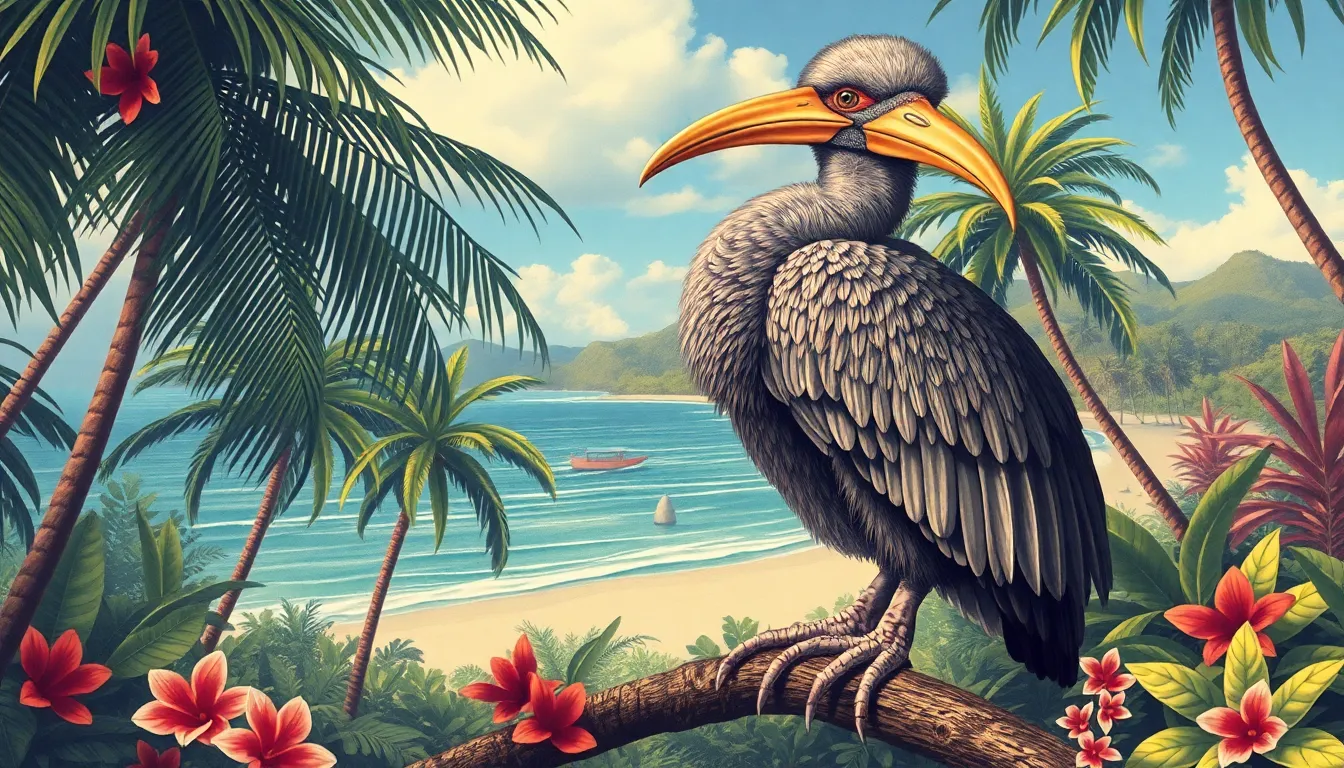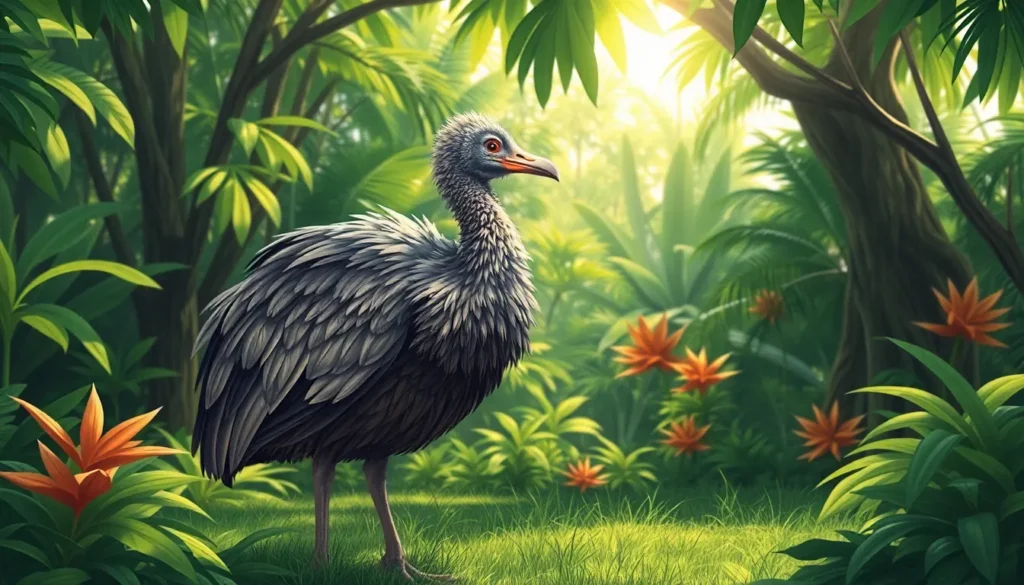Table of Contents
ToggleImagine a world where the dodo bird struts around like it owns the place, flapping its wings and giving side-eye to unsuspecting tourists. Once a symbol of extinction, this quirky bird has sparked debates and dreams of resurrection. With advancements in genetics and a sprinkle of science fiction, the question on everyone’s lips is: could the dodo really make a comeback?
Overview of the Dodo Bird
The dodo bird, a flightless species, existed on the island of Mauritius. It belonged to the pigeon family and showcased remarkable adaptations to its environment. Dodos reached about one meter in height and weighed approximately 10-18 kilograms, making them relatively large birds. Their feathers exhibited a grayish-brown hue, with a tuft of curly feathers on the tail.
Extinction occurred in the late 17th century, primarily due to human activities. The introduction of invasive species, like rats and pigs, further exacerbated their decline. Dodos lost their natural predators, but they struggled to adapt to the rapid changes brought by humans and new animals. By the end of the 1600s, records indicated their extinction.
Few remains and illustrations exist, providing limited insight into their biology and behavior. Fossil evidence reveals that dodos had robust wings but lacked the ability to fly. Their diet consisted of fruits, seeds, and root vegetables, reflecting their habitat’s unique ecology.
Current interest centers on de-extinction efforts. Scientific advancements, particularly in genetics and cloning, raise questions about the feasibility of resurrecting the dodo. Researchers explore options like using closely related species’ DNA to fill in gaps. Ethical considerations also emerge regarding its reintroduction into the wild.
Understanding the dodo’s history and extinction context offers valuable lessons for conservation and biodiversity. The story of the dodo serves as a reminder of humans’ impact on ecosystems and the urgent need to protect threatened species today.
Extinction of the Dodo Bird

The extinction of the dodo bird marks a significant event in environmental history. This flightless bird vanished from the island of Mauritius due to several human-driven factors.
Causes of Extinction
Human activities led to the rapid decline of the dodo. Habitat destruction occurred as settlers cleared land for agriculture. Furthermore, invasive species like rats and pigs directly impacted dodo nesting sites. These animals consumed dodo eggs and competed for food resources. The combination of hunting pressure and ecological disruption ultimately drove the dodo to extinction by the late 17th century. According to historical records, this species disappeared approximately 1681, serving as a critical example of the consequences of human actions on wildlife.
Last Known Sightings
The last known sightings of the dodo bird occurred in the late 1660s. Observers reported encounters in the forests and coastal areas of Mauritius. Remarkably, these sightings included accounts from sailors and naturalists who recorded their experiences. The final confirmed sighting took place around 1662 at the hands of Dutch sailors. After that time, the dodo faded from memory until its re-emergence in discussions about extinction and conservation. These accounts serve as vital links to understanding the dodo’s existence and the environmental implications of its extinction.
Current Scientific Advances
Recent advancements in science offer compelling possibilities for the resurrection of the dodo bird. Innovative research focuses on genetic engineering and cloning techniques, which may pave the way for bringing this extinct species back to life.
Cloning Technology
Cloning technology stands at the forefront of efforts to revive the dodo. Scientists explore techniques such as somatic cell nuclear transfer, which involves inserting a nucleus from preserved dodo cell tissue into a donor egg cell. This method has successfully cloned other extinct species in the past. Creating viable embryos for the dodo remains challenging. However, breakthroughs in cloning could play a crucial role in enabling the possibility of the dodo’s revival.
Genetic Research
Genetic research continues to uncover valuable information about the dodo’s DNA. By sequencing the genetic material from preserved specimens, researchers gather insights into its biology and evolutionary lineage. Studies aim to identify genes responsible for characteristics unique to the dodo. These discoveries help scientists understand the dodo’s adaptations and the ecological roles it once played. Furthermore, advancements in CRISPR technology offer tools to edit genomes, reinforcing the potential for synthesizing a living dodo based on its genetic blueprint.
Public Interest and Conservation Efforts
Growing public interest surrounds the potential revival of the dodo bird. As discussions about de-extinction gain momentum, many people are eager to learn more about the dodo’s legacy and the urgent need for conservation.
Awareness Campaigns
Awareness campaigns play a crucial role in educating the public about extinct species like the dodo. Organizations create informative materials that highlight the importance of biodiversity. Social media platforms help spread these messages rapidly, reaching a wide audience. Interactive exhibits in museums allow visitors to engage with dodo history in a meaningful way. Events such as seminars and workshops encourage discussions on conservation strategies and the ethics of de-extinction.
Role of Zoos and Organizations
Zoos and conservation organizations significantly contribute to the dodo’s narrative. Institutions focus on preserving genetic diversity within existing species, providing a framework for future revitalization efforts. They collaborate on research projects that explore de-extinction methods, leveraging expertise in genetics and wildlife management. Educational programs highlight the importance of protecting threatened species and their habitats. By promoting the dodo’s story, these organizations inspire global efforts to safeguard against further extinctions.
Challenges to Reviving the Dodo Bird
Reviving the dodo bird presents several significant challenges that researchers and conservationists face.
Ecological Considerations
Ecological factors heavily influence the viability of reintroducing the dodo. The original habitat of the dodo on Mauritius has undergone drastic changes since its extinction. Invasive species now dominate the area, threatening any dodo revival. These species, including rats and pigs, compete for resources and could impact the bird’s ability to thrive. The ecosystem also faces altered dynamics due to climate change and human activities. Without restoring the original habitat and controlling invasive species, a revived dodo may struggle to survive.
Ethical Concerns
Ethical questions arise surrounding the resurrection of the dodo bird. Reviving an extinct species raises issues about animal welfare and the potential suffering of these birds in a changed environment. Concerns about human intervention in natural processes also emerge. Questions about the quality of life for a de-extinct dodo, whether the bird could live in a modern ecosystem, need careful consideration. Additionally, resources allocated for de-extinction projects might divert attention from existing endangered species. Balancing the hope for revival against ethical implications requires thorough, transparent discussions.
The possibility of the dodo bird’s return captivates the imagination and sparks important conversations about extinction and conservation. As science advances, the dream of resurrecting this iconic species becomes more tangible. However, the challenges of ecological compatibility and ethical considerations cannot be overlooked.
Reviving the dodo isn’t just about bringing back a lost species; it’s about understanding the broader implications of such actions on ecosystems and existing wildlife. The dodo’s story serves as a reminder of humanity’s impact on nature and the urgent need for responsible conservation efforts. As discussions continue, the legacy of the dodo may inspire future generations to prioritize the protection of our planet’s biodiversity.







